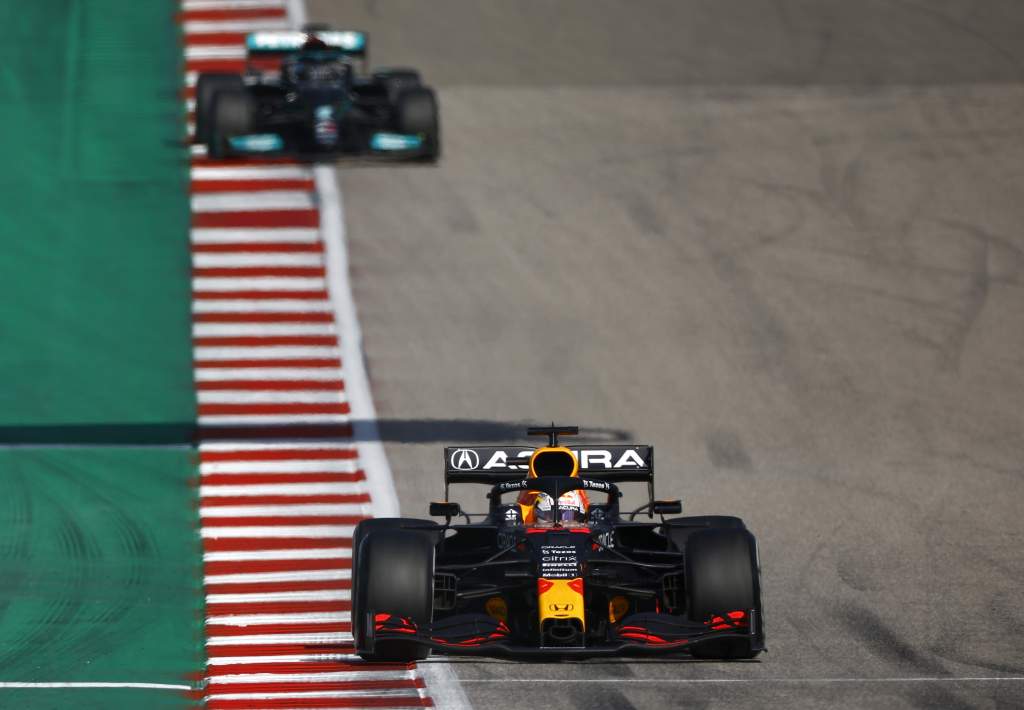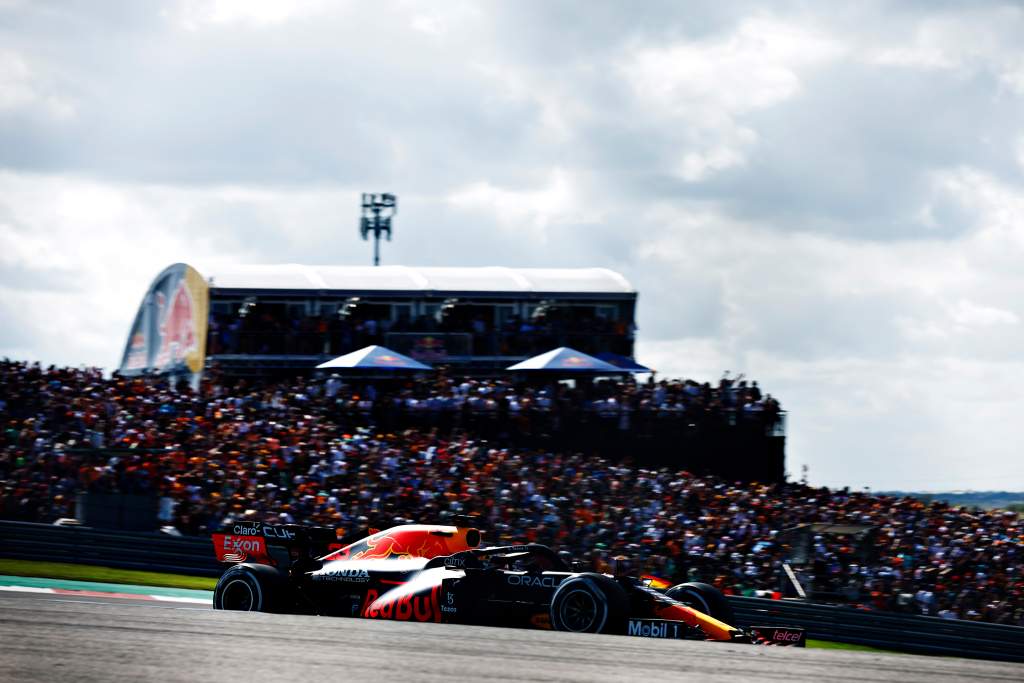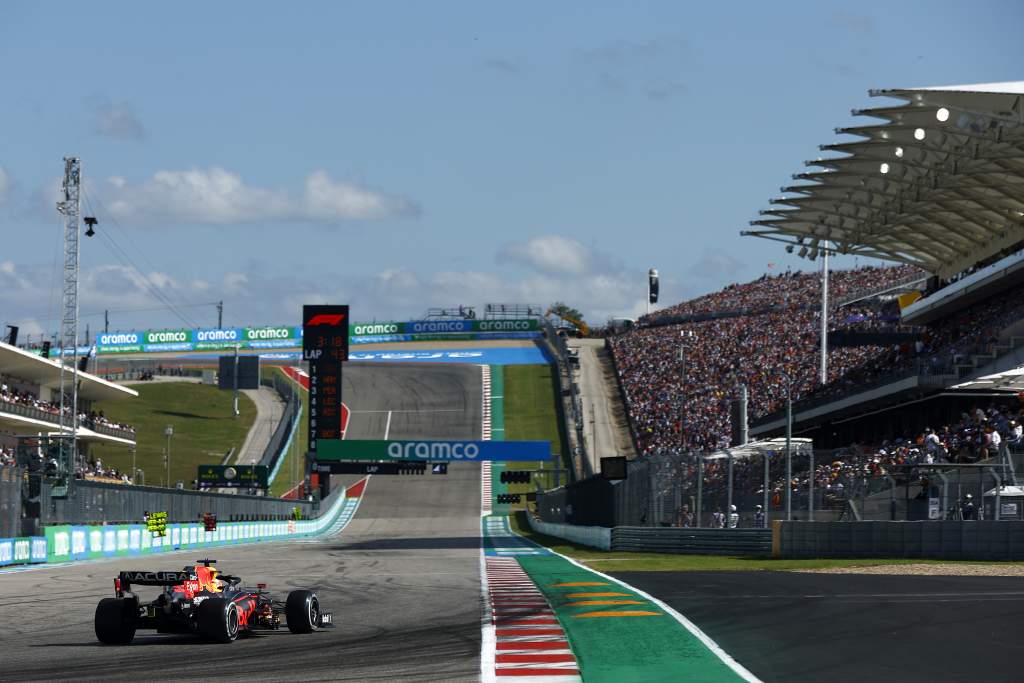Up Next

Last week’s US Grand Prix highlighted the dual reality of any F1 race. On the surface was this great, tense battle between the world’s two best F1 drivers. Beneath it, almost unseen, was the construction of that contest, the nuts and bolts of what is going on.
The latter part is not as thrilling as the picture playing out on the surface – and in many cases not only is the fan not interested in it, but it reveals things they don’t want to be true and so will reject, sometimes quite aggressively. But it remains true regardless.
This distinction is always at its most stark in tyre deg races, of which last week’s US Grand Prix was a prime example.

Long-time hardcore followers of F1 will already understand the implication of this upon race strategies and how in such cases there is a big distinction between potential pace and actual race pace. So if those guys and girls could just indulge us for a moment here, that would be great.
Because there are a lot of readers relatively new to the sport or who follow it more casually who may believe that in the case of two drivers slugging out who wins the race, they are driving flat-out. The reality is, they are hardly ever flat-out, especially in a race dominated by thermal degradation of the tyres. Observed pace is not the same as potential pace.
So in the second and third stints of last week’s race, we saw that Lewis Hamilton was lapping faster than Max Verstappen, with both on the hard compound tyres. However, that does not mean the Mercedes was faster than the Red Bull on hards – which many have assumed. Just because it was going faster doesn’t mean that it actually was faster!
Neither car was being driven at anywhere close to its limits. If they had been, their tyres would have been destroyed within three or four laps. With both driving whole seconds off their potential pace, Hamilton was catching in the final stint by driving slightly less conservatively, not because his car was actually faster than the Red Bull at that point. In the middle stint he was faster because Verstappen’s tyres were damaged by the fast out-lap necessary to take track position.

The task of Verstappen, in the lead of the race in those two stints, was very different from that of the chasing Hamilton. In a tyre deg/track position contest, this makes any comparison of their laptimes pretty much irrelevant as a measure of performance potential.
In the final stint Verstappen, as the leader, knows that Hamilton on tyres eight laps newer will catch him before the end. There is no point in trying to match the pace of Hamilton whose tyres will be almost 1s per lap faster (the deg rate of the hard was just over 0.1s per lap) to keep the gap from shrinking. If Verstappen tried to drive at Hamilton’s pace on tyres that were 1s per lap older, they’d have been destroyed within three or four laps, making him whole chunks slower again and a sitting duck. Instead, he had to just set a pace which would allow him still to have enough grip left when Hamilton arrived on his tail.
He knows that Hamilton will need to be over 1s faster by the time he reaches him to have any chance of overtaking. But in having to push harder than Verstappen to close the gap, Hamilton will have to use up most or all of that 1s tyre advantage. So Verstappen has to go fast enough that Hamilton has to eat into his tyre advantage to catch him in time, but not so fast that he destroys his own tyres. He did it to perfection.

Hamilton began the stint 8.8s behind and arrived on Verstappen’s tail after 11 laps – an average of 0.8s per lap taken out of the Red Bull up to that point. But that 0.8s per lap ensured that now there was little difference between the tyres – and so Hamilton didn’t have enough performance to overtake. Verstappen was only in this position because of how much earlier he pitted – which goes right back to his undercutting ahead at the first stops. But essentially, by the time Hamilton catches Verstappen, the Mercedes’ tyres are barely any better than the Red Bull’s.
To put into perspective how far off their potential pace the two cars are being driven, Hamilton’s fastest lap of the race, set early in that final stint, is around 2.6s (two-point-six seconds!) off what he potentially could do with that much fuel on board (based upon his qualifying time and accounting for the different-compound rubber). The lap was 5.366s slower than his qualifying time, only 2.75s of which is accounted for by the differing fuel levels and tyres. This is fairly typical of a tyre deg race. Had someone come in near the end for an attack at the fastest lap point, this would have been made more obvious.
With both deliberately driving over two-and-a-half seconds off their potential pace, it is meaningless to look at their actual times to judge which is the quicker car.
Being a tyre deg-dominated race, last Sunday’s contest between Verstappen and Hamilton was only ever about track position relative to each other. Because the pace difference between them was way too small to allow one to overtake the other on track if they were on the same-age tyres, the objective was always to be the car ahead after each of the stops. Everything else was subservient to that aim. So Verstappen would have known that his super-hard out-lap to begin the second stint would severely compromise his tyre life, but it was necessary to make the undercut work, to steal track position from Mercedes. Hence why Hamilton – with an out-lap 2.5s slower – was able to catch in the second stint. That first Verstappen out-lap was the only time all race either car was driven to anywhere near its potential.
The reality was the Red Bull could keep its rear tyres from overheating by the end of the Austin lap in qualifying and the Mercedes could not. That difference was worth the 0.2s they were separated by. The pattern was repeated on all three compounds and the difference would have only increased with more laps. Had Verstappen won the start, we’d likely have seen the Red Bull ease away until it had an undercut cushion (around 3s), then back off to whatever pace Hamilton was setting. That gap would have extended once more in each of the remaining stints and it would have been a routine controlled Verstappen victory.

But because Hamilton established track position by winning the start, a different pattern played out. It became a great race exactly because the slower car on the day got in front of the faster one at the start.
It made for a thrilling spectacle and perhaps gave the illusion of a flat-out race. But it was nothing of the kind. It was still a thrilling contest and a pure one – but not one of flat-out driving.






